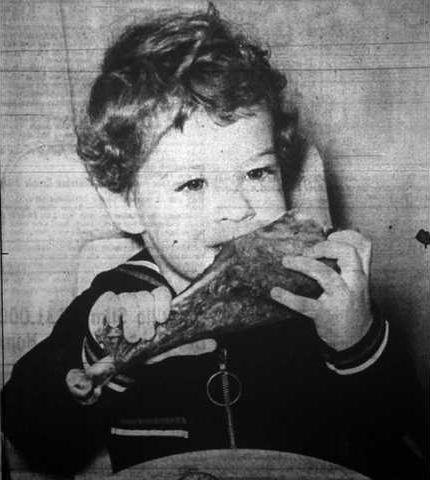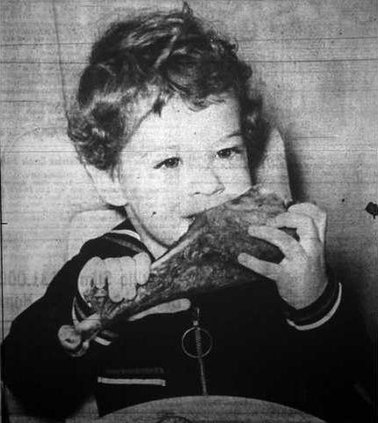Each week we’ll take a step back into the history of Great Bend through the eyes of reporters past. We’ll reacquaint you with what went into creating the Great Bend of today, and do our best to update you on what “the rest of the story” turned out to be.
In the Sunday, Nov. 19 1972 edition of the Great Bend Tribune, we learn about a young, unidentified girl waiting to learn if the dog who attacked her, scaring her face and chest, was infected with rabies or not. The owners were uncertain if the recently adopted dog had been vaccinated prior, so the young girl had to take a dose of anti-rabies serum and begin a 10-day waiting period.
The incident prompted a local veterinarian, Dr. Jerry Schrader, and the Barton County Health Officer, Dr. H.C. Krueger, to call for the city to organize and sponsor a rabies clinic in hopes of eliminating one facet of the problem for future dog-bite victims. Then City Administrator Ken Bettle said the city had recently considered requiring rabies vaccinations in order to license a dog. Schrader, however pointed out that people responsible enough to license pets tend to get the vaccination, so making it a law would not encourage further compliance. Bettle was concerned if the city were to pick up all the strays, they would overtax the Humane Society shelter. That would also likely overtax the police department, according to then Chief of Police Duane Dugan who admitted the police weren’t properly equipped to catch dogs.
What a conundrum! Well, on Monday, Nov. 20, 1972, Krueger addressed the city council about rabies control. By Tuesday, Nov. 21, the family of the little girl learned the dog was not rabid and she would not need to go through the 18-shot series to cure her of rabies. Then, the story dropped off the radar again. Since the 1950s, Great Bend has been in an agreement with the Golden Belt Humane Society to enforce animal control laws, according to a history by Dr. Shrader. It was another 25 years, in 1975, that the first corporate vehicle was purchased for transporting animals. Sometime before 1990, the city did enact a rabies vaccination law.
According to Gayle B. at the Golden Belt Humane Society, Barton County requires rabies shots for dogs, horses, cats and ferrets. Horses were added to the list in the 1990s following a minor outbreak of equine rabies. She added that Barton County is more progressive when it comes to rabies legislation. Neighboring Stafford County, and several other Western Kansas counties do not require rabies vaccinations at all. “In humans,rabies is almost 100 percent fatal,” she said. “There have only been three people in all of history who have survived rabies, and no one knows why.”
Telephones then
Remember good old Ma Bell? Otherwise known as American Telephone and Telegraph company, or AT&T? Forty years ago, it used to be the only phone company. Sure, there were regional babies, but only one Ma. This week in 1972, the company was given the okay by the FCC to increase phone rates. In Kansas, a single line would cost $5.95 a month, but a person could save if they were willing to have a party line. For readers under the age of 35, that meant you shared a phone line with another household. Each house had a unique ring, and you were only supposed to pick up your own calls. Still--who could resist the temptation to listen in? Well, lots of people, most of the time, resisted, but you just never knew. In the city, there were two-party lines costing $4.65 a month. But out in the rural areas, phone service was more expensive. There, you had to share the line with four parties, at a cost of $5.90 a month. Add an extra $1.00 a month for each extension phone in the house. For teens, one of the most coveted privileges of the day was having a personal extension in their own room. The only thing better than that was a private line--but hardly anyone had one of those. Everyone had to share back then.
Soon, however, Ma Bell would see its monopoly busted. Technology made it possible for smaller companies to compete, first with long distance, and later with local calling. In the 1980s, the courts ruled AT&T had to allow competitors to use existing phone lines to provide alternatives. That eventually led to cable companies and wireless companies entering the scene.
In 1996, the FCC gave us the Telecommunications Act, designed to provide an open and fair playing field for any company to get into the business. That’s why today, we’re inundated with direct mailings from several telecom companies every day, but also why we can take photos, send texts, talk, have face time, read, write and surf with our handheld phones.
Wind power prediction
An editorial by The Great Bend Tribune’s vice president and general manager Robert B. Werner predicted the wind power boom that Kansas has enjoyed for more than a decade.
“The fact that the wind blows almost all the time in Kansas could become the source of electrical supplies,” he wrote. “It may turn out in the years ahead the use of huge windmills may harness the ever-present Kansas wind to provide electrical energy, not for a single farm as in days past, but for entire cities.”
In fact, thanks to the oil embargoes of the 1970s, development of this energy source took hold. One has to wonder what Werner would think today when driving along I-70 near Ellsworth?
SMC
The paper ran the television guide weekly. And in the 1970s, what kid didn’t look forward to sleeping in, then getting up and lounging around in their pajamas Saturday morning, watching Saturday morning cartoons?
Some of the familiar shows of the day were Pink Panther, Scooby Doo, Underdog, Bugs Bunny, H.R. Pufnstuf, The Jackson 5, Jetsons, Josie and the Pussycats and Fat Albert.
Saturday night television offered something for the grownups. There was The Mary Tyler Moore Show, The Bob Newhart Show, All in the Family, Hee Haw, Adventure Theatre, and the Lawrence Welk show. Only a handful of stations were available.
It would be ten more years before cable television brought hundreds of channels and, gasp, no commercials. That only lasted a short while though.
Black Friday delivered scads of Christmas sale ads then as now. TG &Y, a department store that was once located in the Westgate shopping center where Waters True Value is located today, ran a four day sale to kick-off the shopping season. Popular at the time were GI Joe action figures for boys, or the Sweet Baby doll for girls.
Skylanders Giants are the hot action figure this year, and Monster High Skull Shores dolls are hot for girls.
Out of the Morgue
Rabies scare, telephones, cartoons and some windy predictions of 1972





